UAE banks enjoy the good times
13 October 2023
 MEED's November 2023 special report on the UAE also includes:
MEED's November 2023 special report on the UAE also includes:
> UAE construction sector returns to form
> Hail and Ghasha galvanises UAE upstream market
> UAE closes ranks ahead of Cop28
> UAE ramps up decarbonisation of water sector
> UAE aviation returns to growth

Talk to any Gulf banking analyst and the message is unanimous: UAE banks are doing very well, and there are few clouds dampening the outlook heading into 2024.
Nearly all UAE banks have reported strong growth in operating profit on the back of higher interest rates, wider margins, good loan growth and higher fees and commissions.
“Good GDP growth and improved business confidence have also contributed to an overall sense of wellbeing,” says Karti Inamdar, senior credit analyst at CI Ratings.
Fat profits reflect the robust environment for UAE banks. The big four UAE lenders – First Abu Dhabi Bank (Fab), Emirates NBD, Abu Dhabi Commercial Bank and Dubai Islamic Bank, which account for more than three-quarters of system assets – reported a combined net profit of $7.4bn in the first six months of 2023, up from $4.4bn for the same period of 2022.
“Bottom line profit is growing significantly for the four largest UAE banks, and that is a reflection of operating income growth, driven both by interest and non-interest income,” says Francesca Paolino, lead analyst at Moody’s Investors Service.
“That, in turn, has resulted from greater consumer confidence as macroeconomic conditions in the UAE remain strong.”
Region-beating returns
UAE banks topped the GCC region in the second quarter of this year in terms of return on equity, at 15.9 per cent – against a GCC-wide trend of 13 per cent. Net interest margins (NIMs) in the quarter were 3.44 per cent, compared with 2.44 per cent in the year-earlier period.
“Higher interest rates have helped banks in NIM expansion, as more than 60 per cent of banking sector deposits are still low or non-interest bearing,” says Puneet Tuli, financial institutions rating analyst at S&P Global Ratings.
Meanwhile, the cost of risk is reducing thanks to the more benign economic environment and stronger non-oil activity, which has also led to higher lending growth compared with S&P’s original expectations.
According to Fitch Ratings, UAE banks have been well-positioned for higher interest rates and, since 2021, their earning assets yields have risen more than their funding costs due to a still-high share of cheap current and savings accounts (Casa), and a large percentage of floating lending on their loan books.
Higher interest rates and increased business volumes drove net interest income up 37 per cent in the first half of 2023, Moody’s Investors Service notes in relation to the four largest lenders. Again, interest income growth outweighed funding cost growth, as low-cost Casa accounts remained a big contributor to the banks’ funding.
The higher operating income reflects a combination of interest and non-interest income, supported by greater consumer confidence. Strong activity in non-oil sectors in the UAE, such as trade, tourism and real estate, is a pointer to this effect.
“A driver for UAE banks’ increased non-interest income is their foreign exchange and derivative income. They are also reporting higher fee-generating activity from both retail and investment banking,” says Paolino.
As of June 2023, non-interest income constitutes around one-third of the total operating income at the larger UAE banks. This reflects the large banks seeking to diversify their revenue streams while growing locally and internationally.
Robust fundamentals
Liquidity and capital positions are unsurprisingly robust, providing a layer of insulation should conditions for UAE lenders deteriorate.
The big four UAE banks maintained strong capital buffers with a tangible common equity ratio of 15.1 per cent in aggregate as of June 2023. Strong earnings contributed to higher core capital buffers, more than offsetting risk-weighted assets growth.
UAE lenders’ liquidity has been strong for several years now, given that deposit growth in the country is dependent on energy prices, which have been favourable.
“In the UAE, deposits are not difficult to find, especially if you are willing to pay a price, so it’s the cost of deposits that needs to be managed,” says Inamdar.
“There’s usually plenty of funding available in the financial system when oil prices are high.”
The main issue on the funding side is high customer concentration levels – a side-effect of the UAE’s large number of high-net-worth individuals and wealthy institutions.
Asset quality has nonetheless improved in the UAE. New non-performing loan (NPL) classifications have declined and loan recoveries have been good, partly due to the improvement in the real estate sector, says Inamdar.
According to Moody’s, the overall NPL ratio declined to about 5 per cent as of the first half of 2023, from 5.4 per cent a year earlier, reflecting the recovering operating environment in the country. Yet this ratio is still one of the highest in the GCC.
“On the one side, you can expect some solid operating conditions to provide some improvements to NPL ratios,” says Paolino.
“But on the other side, UAE banks remain exposed to the real estate sector and also to single borrower concentrations, as well as to large loan restructurings.”
While continued high interest could stoke future asset quality problems, local banks have built up provisions with a coverage ratio in excess of 100 per cent.
Technological dividends
Looking ahead, UAE banks will focus on their digital proposition, meaning investment in innovation and technology will likely continue and operating costs remain high.
Banks in the UAE are already benefitting from years of significant investment in technology.
“We have seen a reduction of banks' physical footprint, with one of the banks reducing its network from 50 branches to just five without any significant impact on activity,” says Tuli.
“Banks did not experience any major cyber risk issues as well. All this is helping their overall profitability.”
In terms of future growth, some cross-border forays can be expected.
For example, Fab and Emirates NBD have strong regional ambitions that could help grow their individual balance sheets. Their diversified business base – in terms of geography, products and customer segments – renders them less vulnerable to a downturn in any of the markets they operate in.
There are few downside risks facing UAE banks, barring an unexpected drop in oil prices or – notes S&P’s Tuli – a significantly higher-than-expected migration of deposits from non-interest-bearing instruments to remunerated instruments that will reduce the benefits of higher interest rates.
That should leave analysts continuing to tell a positive story about the country’s banking prospects.
Exclusive from Meed
-
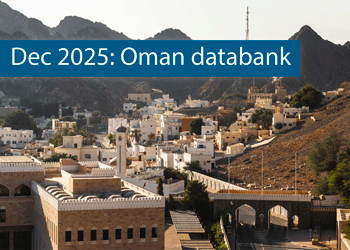 Oman’s growth forecast points upwards
Oman’s growth forecast points upwards24 December 2025
-
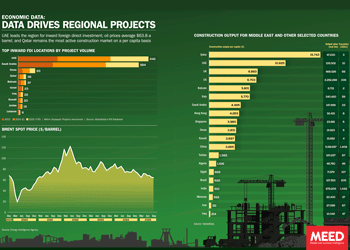 December 2025: Data drives regional projects
December 2025: Data drives regional projects23 December 2025
-
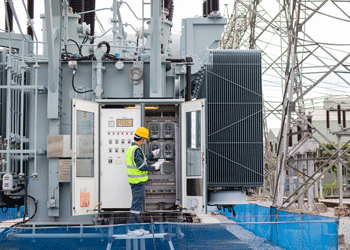 Local firm bids lowest for Kuwait substation deal
Local firm bids lowest for Kuwait substation deal22 December 2025
-
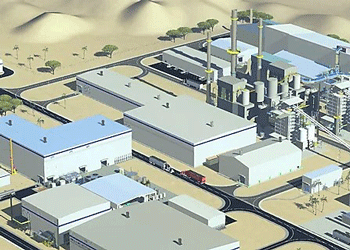 Saudi-Dutch JV awards ‘supercentre’ metals reclamation project
Saudi-Dutch JV awards ‘supercentre’ metals reclamation project22 December 2025
-
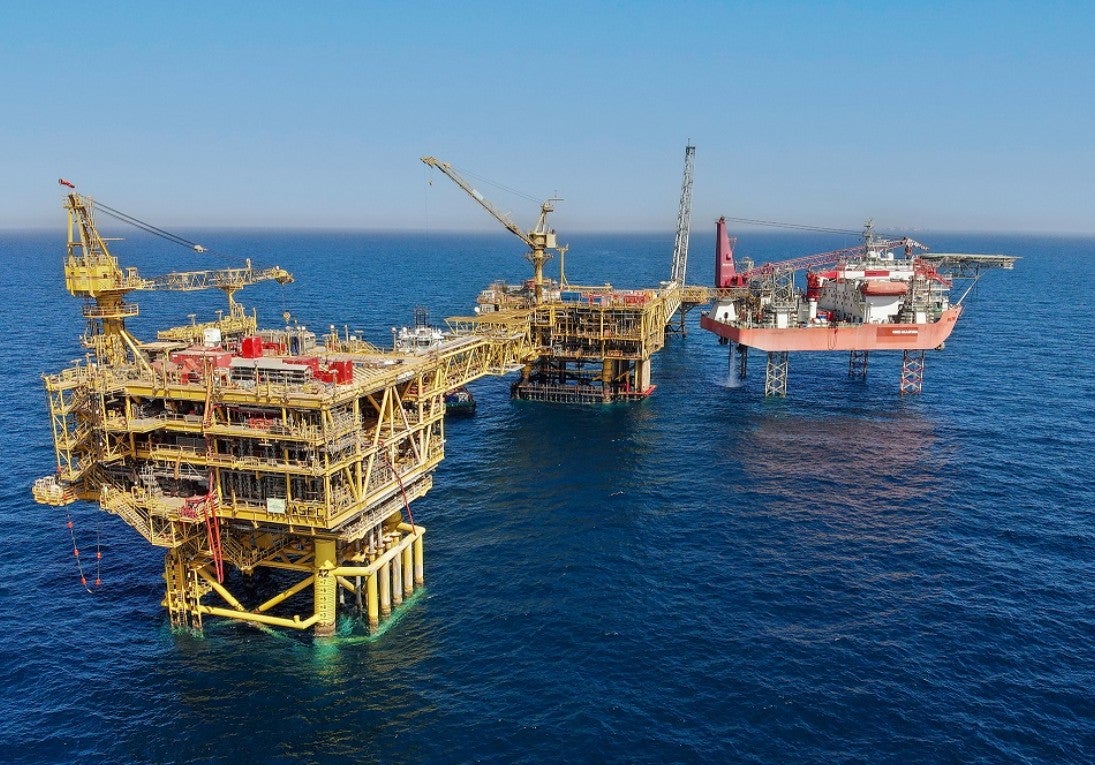 QatarEnergy LNG awards $4bn gas project package
QatarEnergy LNG awards $4bn gas project package22 December 2025
All of this is only 1% of what MEED.com has to offer
Subscribe now and unlock all the 153,671 articles on MEED.com
- All the latest news, data, and market intelligence across MENA at your fingerprints
- First-hand updates and inside information on projects, clients and competitors that matter to you
- 20 years' archive of information, data, and news for you to access at your convenience
- Strategize to succeed and minimise risks with timely analysis of current and future market trends

Related Articles
-
 Oman’s growth forecast points upwards
Oman’s growth forecast points upwards24 December 2025

MEED’s January 2026 report on Oman includes:
> COMMENT: Oman steadies growth with strategic restraint
> GVT & ECONOMY: Oman pursues diversification amid regional concerns
> BANKING: Oman banks feel impact of stronger economy
> OIL & GAS: LNG goals galvanise Oman’s oil and gas sector
> POWER & WATER: Oman prepares for a wave of IPP awards
> CONSTRUCTION: Momentum builds in construction sectorTo see previous issues of MEED Business Review, please click herehttps://image.digitalinsightresearch.in/uploads/NewsArticle/15306449/main.gif -
 December 2025: Data drives regional projects
December 2025: Data drives regional projects23 December 2025
Click here to download the PDF
Includes: Top inward FDI locations by project volume | Brent spot price | Construction output
MEED’s January 2026 report on Oman includes:
> COMMENT: Oman steadies growth with strategic restraint
> ECONOMY: Oman pursues diversification amid regional concerns
> BANKING: Oman banks feel impact of stronger economy
> OIL & GAS: LNG goals galvanise Oman’s oil and gas sector
> POWER & WATER: Oman prepares for a wave of IPP awards
> CONSTRUCTION: Momentum builds in construction sectorTo see previous issues of MEED Business Review, please click herehttps://image.digitalinsightresearch.in/uploads/NewsArticle/15306140/main.gif -
 Local firm bids lowest for Kuwait substation deal
Local firm bids lowest for Kuwait substation deal22 December 2025
The local Al-Ahleia Switchgear Company has submitted the lowest price of KD33.9m ($110.3m) for a contract to build a 400/132/11 kV substation at the South Surra township for Kuwait’s Public Authority for Housing Welfare (PAHW).
The bid was marginally lower than the two other offers of KD35.1m and KD35.5m submitted respectively by Saudi Arabia’s National Contracting Company (NCC) and India’s Larsen & Toubro.
PAHW is expected to take about three months to evaluate the prices before selecting the successful contractor.
The project is one of several transmission and distribution projects either out to bid or recently awarded by Kuwait’s main affordable housing client.
This year alone, it has awarded two contracts worth more than $100m for cable works at its 1Z, 2Z, 3Z and 4Z 400kV substations at Al-Istiqlal City, and two deals totalling just under $280m for the construction of seven 132/11kV substations in the same township.
Most recently, it has tendered two contracts to build seven 132/11kV main substations at its affordable housing project, west of Kuwait City. The bid deadline for the two deals covering the MS-01 through to MS-08 substations is 8 January.
https://image.digitalinsightresearch.in/uploads/NewsArticle/15305745/main.gif -
 Saudi-Dutch JV awards ‘supercentre’ metals reclamation project
Saudi-Dutch JV awards ‘supercentre’ metals reclamation project22 December 2025
The local Advanced Circular Materials Company (ACMC), a joint venture of the Netherlands-based Shell & AMG Recycling BV (SARBV) and local firm United Company for Industry (UCI), has awarded the engineering, procurement and construction (EPC) contract for the first phase of its $500m-plus metals reclamation complex in Jubail.
The contract, estimated to be worth in excess of $200m, was won by China TianChen Engineering Corporation (TCC), a subsidiary of China National Chemical Engineering Company (CNCEC), following the issue of the tender in July 2024.
Under the terms of the deal, TCC will process gasification ash generated at Saudi Aramco’s Jizan refining complex on the Red Sea coast to produce battery-grade vanadium oxide and vanadium electrolyte for vanadium redox flow batteries. AMG will provide the licensed technology required for the production process.
The works are the first of four planned phases at the catalyst and gasification ash recycling ‘Supercentre’, which is located at the PlasChem Park in Jubail Industrial City 2 alongside the Sadara integrated refining and petrochemical complex.
Phase 2 will expand the facility to process spent catalysts from heavy oil upgrading facilities to produce ferrovanadium for the steel industry and/or additional battery-grade vanadium oxide.
Phase 3 involves installing a manufacturing facility for residue-upgrading catalysts.
In the fourth phase, a vanadium electrolyte production plant will be developed.
The developers expect a total reduction of 3.6 million metric tonnes of carbon dioxide emissions a year when the four phases of the project are commissioned.
SARBV first announced its intention to build a metal reclamation and catalyst manufacturing facility in Saudi Arabia in November 2019. The kingdom’s Ministry of Investment, then known as the Saudi Arabian General Investment Authority (Sagia), supported the project.
In July 2022, SARBV and UCI signed the agreement to formalise their joint venture and build the proposed facility.
The project has received support from Saudi Aramco’s Namaat industrial investment programme. Aramco, at the time, also signed an agreement with the joint venture to offtake vanadium-bearing gasification ash from its Jizan refining complex.
Photo credit: SARBV
https://image.digitalinsightresearch.in/uploads/NewsArticle/15305326/main.gif -
 QatarEnergy LNG awards $4bn gas project package
QatarEnergy LNG awards $4bn gas project package22 December 2025
QatarEnergy LNG, a subsidiary of state-owned QatarEnergy, has awarded the main engineering, procurement, construction and installation (EPCI) contract for a major package for the second phase of its North Field Production Sustainability (NFPS) project.A consortium comprising the Italian contractor Saipem and state-owned China Offshore Oil Engineering Company (COOEC) has secured the EPCI contract for the COMP5 package. The contract value is $4bn, with Saipem declaring its share to be worth $3.1bn.
Milan-headquartered Saipem said the contract will run for about five years. The scope of work comprises engineering, procurement, fabrication and installation of two compression complexes, each including a compression platform, a living quarters platform, a flare platform supporting the gas combustion system, and the related interconnecting bridges. Each complex will have a total weight of about 68,000 tonnes.
Offshore installation operations will be carried out by Saipem’s De He construction vessel in 2029 and 2030.
MEED previously reported that the following contractors submitted bids for the NFPS phase two COMP5 package:
- Larsen & Toubro Energy Hydrocarbon (India)
- McDermott (US)
- Saipem/China Offshore Oil Engineering Company (Italy/China)
QatarEnergy LNG, formerly Qatargas, is said to have issued the tender for the NFPS phase two COMP5 package in the first quarter of the year.
Contractors submitted technical bids for the COMP5 package in late June, while commercial bids were submitted by 8 October, as per sources.
Based upon initial evaluation of bids by QatarEnergy LNG, L&TEH has emerged as the lowest bidder for the COMP5 package, followed by McDermott, with the consortium of Saipem and COOEC in third place, MEED reported in late October.
In the weeks following that, the project operator is said to have engaged all bidders for a final round of negotiations, during which the consortium of Saipem and COOEC is believed to have “clinched the deal”, according to sources.
The detailed scope of work on the COMP5 package covers the EPCI work on the following:
- Two gas compression platforms, each weighing 30,000-35,000 tonnes, plus jacket
- Two living quarters platforms, plus jacket
- Two gas flare platforms, plus jacket
- Brownfield modification work at two complexes
NFPS scheme
QatarEnergy’s North Field liquefied natural gas (LNG) expansion programme requires the state enterprise to pump large volumes of gas from the North Field offshore reserve to feed the three phases of the estimated $40bn-plus programme.
QatarEnergy has already invested billions of dollars in engineering, procurement and construction works on the two phases of the NFPS project, which aims to maintain steady gas feedstock for the North Field LNG expansion phases.
The second NFPS phase will mainly involve building gas compression facilities to sustain and gradually increase gas production from Qatar’s offshore North Field gas reserve over the long term.
Saipem has been the most successful contractor on the second NFPS phase, securing work worth a total of $8.5bn.
QatarEnergy LNG awarded Saipem a $4.5bn order in October 2022 to build and install gas compression facilities. The main scope of work on the package, which is known as EPCI 2, covers two large gas compression complexes that will comprise decks, jackets, topsides, interconnecting bridges, flare platforms, living quarters and interface modules.
The gas compression complexes – CP65 and CP75 – will weigh 62,000 tonnes and 63,000 tonnes, respectively, and will be the largest fixed steel jacket compression platforms ever built.
Following that, Saipem won combined packages COMP3A and COMP3B of the NFPS project’s second phase in September last year.
The scope of work on the combined packages encompasses the EPCI of a total of six platforms, approximately 100 kilometres (km) of corrosion resistance alloy rigid subsea pipelines of 28-inches and 24-inches diameter, 100km of subsea composite cables, 150km of fibre optic cables and several other subsea units.
Separately, QatarEnergy LNG awarded McDermott the contract for the NFPS second phase package known as EPCI 1, or COMP1, in July 2023. The scope of work on the estimated $1bn-plus contract is to install a subsea gas pipeline network at the North Field gas development.
In March this year, India’s Larsen & Toubro Energy Hydrocarbon (LTEH) won the main contract for the combined 4A and 4B package, which is the fourth package of the second phase of the NFPS project and is estimated to be valued at $4bn-$5bn.
The main scope of work on the package is the EPCI of two large gas compression systems that will be known as CP8S and CP4N, each weighing 25,000-35,000 tonnes. The contract scope also includes compression platforms, flare gas platforms and other associated structures.
LTHE sub-contracted detailed engineering and design works on the combined 4A and 4B package to French contractor Technip Energies.
NFPS first phase
Saipem is also executing the EPCI works on the entire first phase of the NFPS project, which consists of two main packages.
Through the first phase of the NFPS scheme, QatarEnergy LNG aims to increase the early gas field production capacity of the North Field offshore development to 110 million tonnes a year.
QatarEnergy LNG awarded Saipem the contract for the EPCI package in February 2021. The package is the larger of the two NFPS phase one packages and has a value of $1.7bn.
Saipem’s scope of work on the EPCI package encompasses building several offshore facilities for extracting and transporting natural gas, including platforms, supporting and connecting structures, subsea cables and anti-corrosion internally clad pipelines.
The scope of work also includes decommissioning a pipeline and other significant modifications to existing offshore facilities.
In addition, in April 2021, QatarEnergy LNG awarded Saipem two options for additional work within the EPCI package, worth about $350m.
QatarEnergy LNG awarded Saipem the second package of the NFPS phase one project, estimated to be worth $1bn, in March 2021.
Saipem’s scope of work on the package, which is known as EPCL, mainly covers installing three offshore export trunklines running almost 300km from their respective offshore platforms to the QatarEnergy LNG north and south plants located in Ras Laffan Industrial City.
Saipem performed the front-end engineering and design work on the main production package of the first phase of the NFPS as part of a $20m contract that it was awarded in January 2019. This provided a competitive advantage to the Italian contractor in its bid to win the package.
https://image.digitalinsightresearch.in/uploads/NewsArticle/15305330/main2239.jpg

